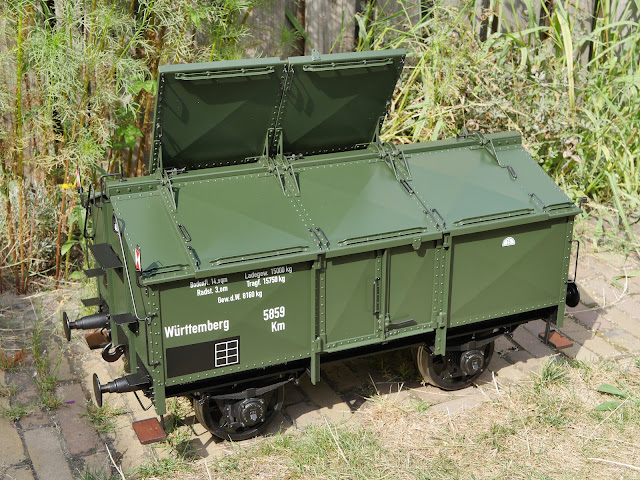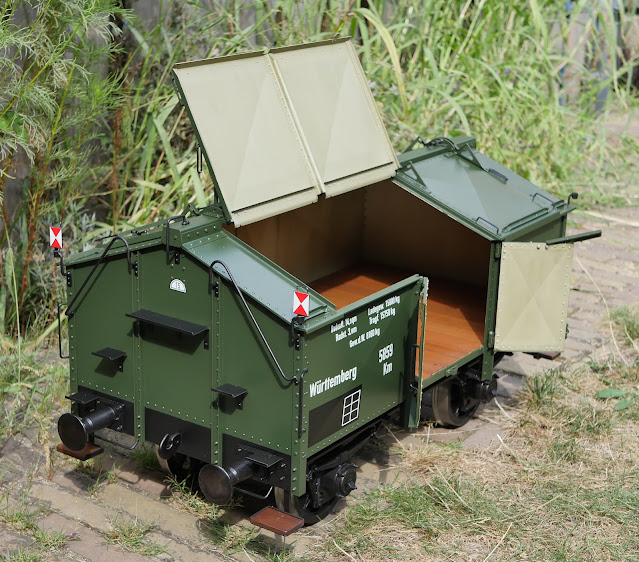The summer holiday was quite warm, so the paint has thoroughly dried. The last thing to do was spray a coat of varnish over the whole wagon. This is to seal and protect the lettering.
There were also some tiny mistakes (sags and drips of paint) that had to be removed. This was done by sanding these down with fine sandpaper and then respraying them with green paint with an airbrush. With the airbrush, I can control the amount of paint and the area where it should be applied.
But because only a small area is touched-up, the gloss of the green paint will differ, especially at the edges of the touched-up area. This is where the coat of varnish helps out. This coat, sprayed with my big spray gun, gives an even layer of varnish, which give a smooth and semi-gloss finish.
The buffer heads and coupling hooks were blackened, by heating them and dipping them in old engine oil. (The same method as used for the other wagons).
So this final step completes the Klappdeckelwagen (lidded wagon). Ready for the track.
The photo gallery below will give an impression of the final wagon.
So this is the final 7¼" wagon. The coupler chains have still to be made for all three wagons. That's a job for the winter months.
The effective building time was approx. a half year, weight is about 24 kg and total length over the buffers is 81 cm.
Cleaning the wagon after use the last year (photo 16 Oktober 2023)
Next project
We went this summer to East Anglia (England) to visit the 0-6-0 Great Eastern Railway Y14. It runs on the
North Norfolk railway.
I could see it in steam and take a lot of photographs. Apart from the steam pump for the T3, this will be the next project. A live steam version of this loco on 5" gauge.


























































